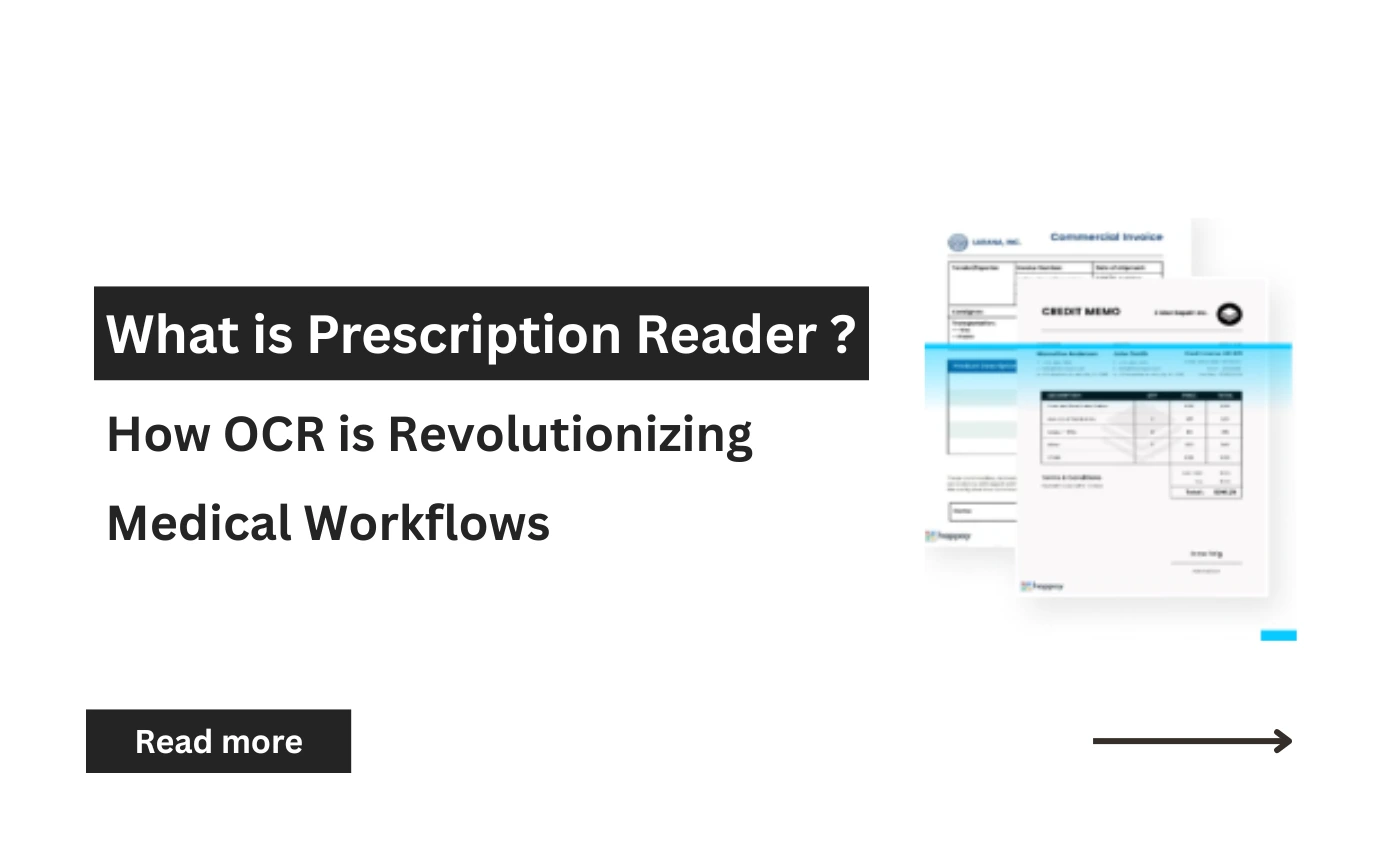

In the ever-evolving landscape of healthcare technology, automation plays a pivotal role in enhancing patient care and operational efficiency. One such transformative technology is Optical Character Recognition (OCR) a tool that is quietly reshaping how healthcare institutions handle data, especially handwritten prescriptions. From reducing human error to powering large-scale analytics, OCR is streamlining medical workflows in unprecedented ways.
In healthcare, where paperwork and manual processes dominate much of the administrative workload, OCR offers a powerful solution for digitization. It not only saves time but also increases accuracy, minimizes errors, and boosts the overall quality of service delivery.
This blog depicts detailing about what a prescription reader is and how ocr is revolutionizing medical work flows in health care field.
Optical Character Recognition (OCR) is a technology that converts different types of documents such as scanned paper documents, PDF files, or images captured by a camera into editable and searchable data. At its core, OCR “reads” text from images and translates it into machine-readable text. This technology has long been used in sectors like finance, logistics, and education, but in healthcare, its impact is especially profound.
A prescription reader is an AI-powered application designed specifically to extract and process information from handwritten or printed medical prescriptions using OCR technology. These systems are trained on vast datasets of prescription images to recognize handwriting styles, abbreviations, dosage instructions, drug names, and doctor notes, often complex and difficult for even trained professionals to interpret accurately.
In recognizing medical terminology and handwritten text.
of patient name, medicine, dosage, frequency, and duration.
aligned with HIPAA and other healthcare data standards.
with pharmacy databases, EHRs, and hospital management systems.
Reduces the time spent on reading and entering prescription data manually.
Minimizes the risk of misinterpretation or manual entry errors, improving patient safety
Ensures timely and accurate medication dispensing.
Enables researchers and healthcare providers to gain insights into prescription trends and drug usage patterns..
The adoption of OCR in medical environments is not just about automation it's about revolutionizing the way healthcare functions at every level. Here’s how:
OCR eliminates repetitive tasks like data entry, freeing up staff to focus on patient care,thus including automation to ocr Whether it's reading prescriptions, filing reports, or uploading patient documents, automation ensures smooth, error-free processing.
By removing manual touchpoints, OCR significantly lowers the chances of clerical errors. It also ensures that medical records and prescriptions are properly documented and securely stored, aiding in compliance with healthcare regulations.
Advanced OCR systems like Pixl's incorporate data masking and encryption, ensuring that sensitive prescription data remains confidential and compliant with laws like HIPAA and India’s Data Protection Bill.
Prescription data collected through OCR can be analyzed to identify drug usage trends, evaluate treatment outcomes, or detect irregularities. Hospitals, insurers, and researchers can leverage this data for better decision-making and proactive care strategies.
With OCR, prescription data becomes available in real-time to relevant stakeholders. Pharmacists, doctors, and insurers can instantly access prescription details from any device, ensuring faster decision-making and improved coordination of care.
In remote consultations, doctors can upload handwritten prescriptions. OCR ensures these are automatically digitized and forwarded to pharmacies or stored in the patient's digital health locker enabling frictionless telehealth workflows.
Administrative teams no longer need to manually file or organize paper prescriptions. Automated document indexing and searchability make retrieving prescription history instant and effortless.
OCR technology, and particularly prescription readers, are transforming the healthcare landscape by digitizing the last mile of handwritten communication prescriptions. With solutions like Pixl’s Medical Prescription OCR, healthcare providers can achieve new levels of efficiency, accuracy, and security in managing medical data.
As the healthcare industry continues to adopt intelligent automation, OCR is no longer a luxury it's a necessity. It's not just reading prescriptions; it's enabling smarter, faster, and safer healthcare.
Pix Dynamics Medical Prescription OCR is one such solution that stands out with its industry-leading accuracy, built-in privacy safeguards, and seamless integration with pharmacy and hospital systems.
Ready to transform? Commence your Digital Transformation journey now!
Get Started